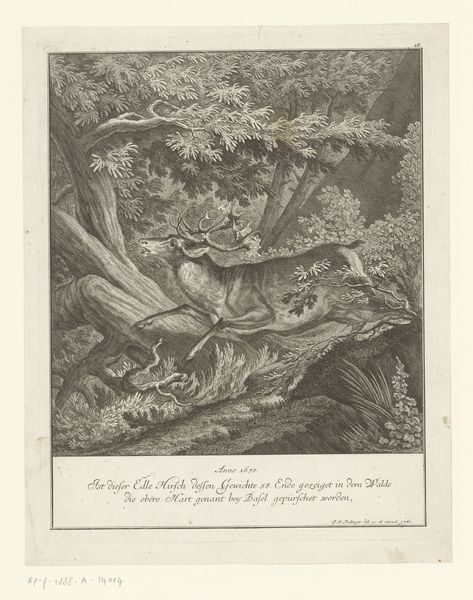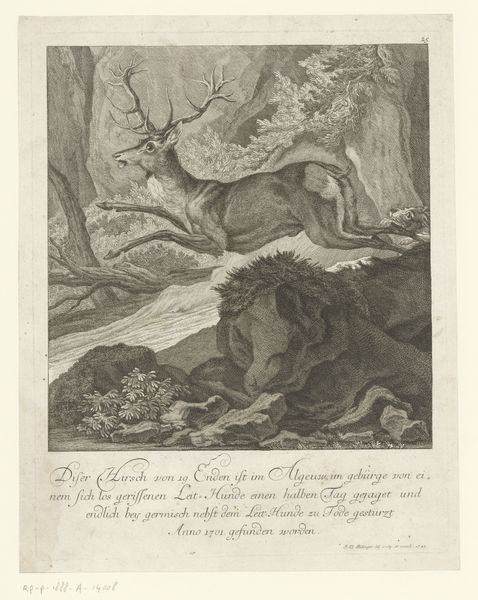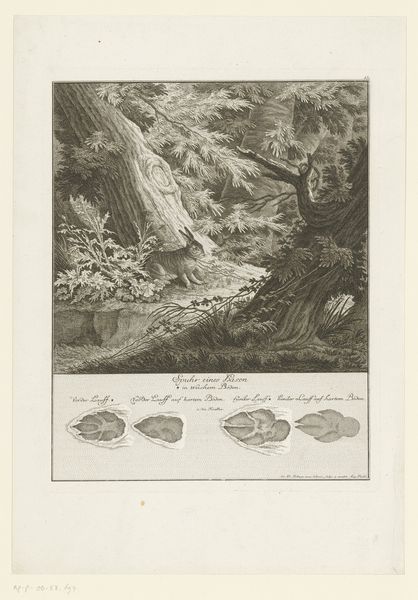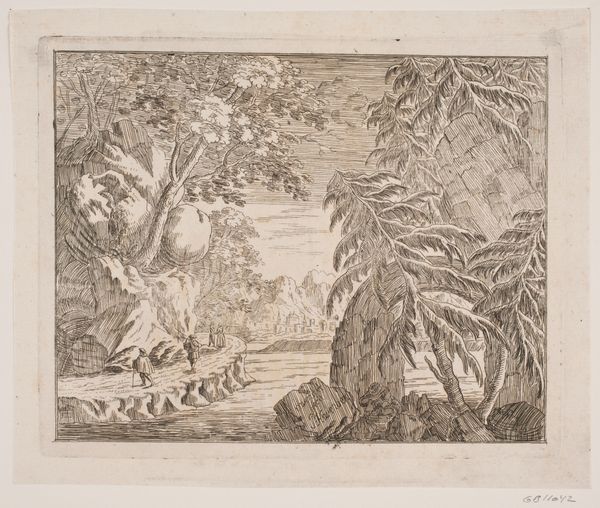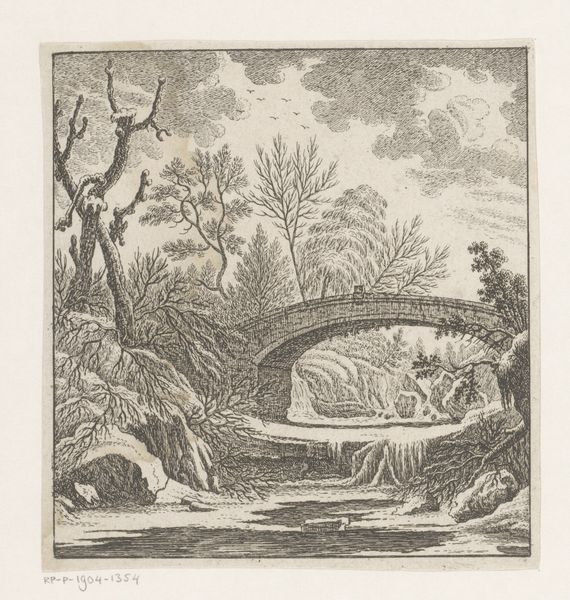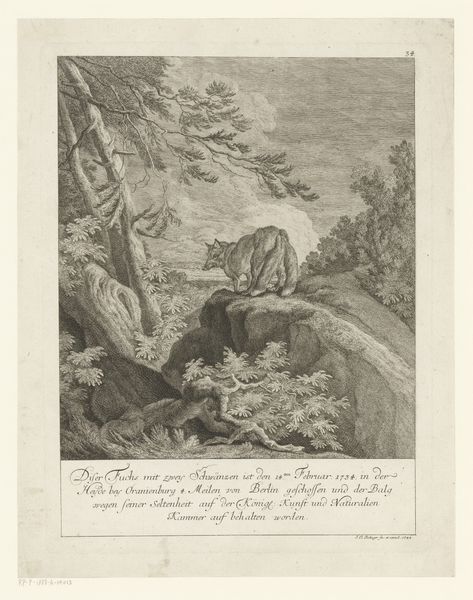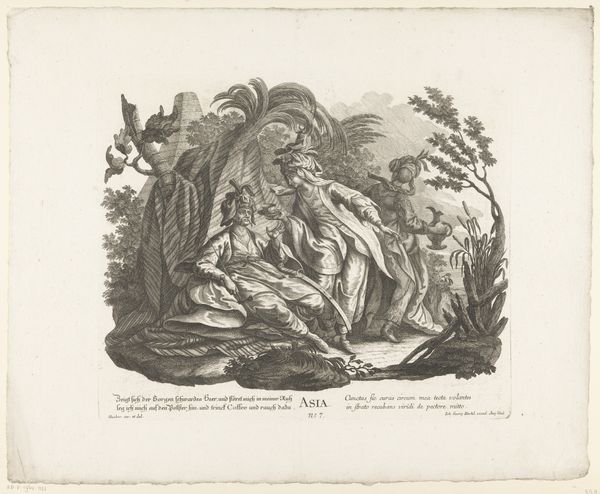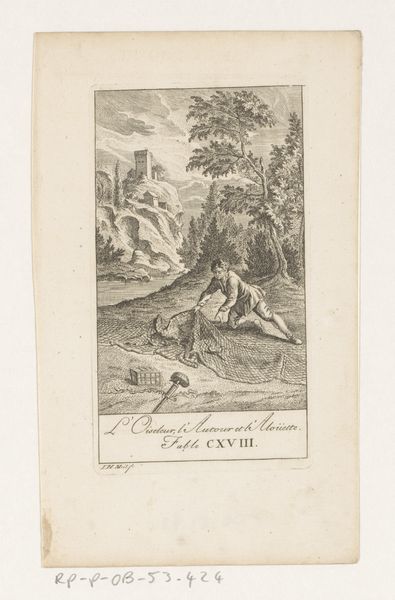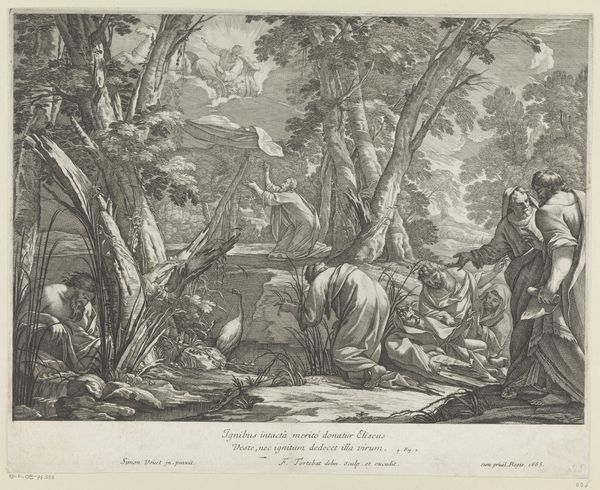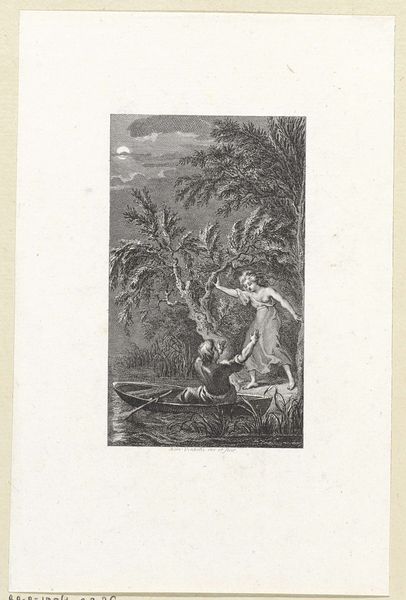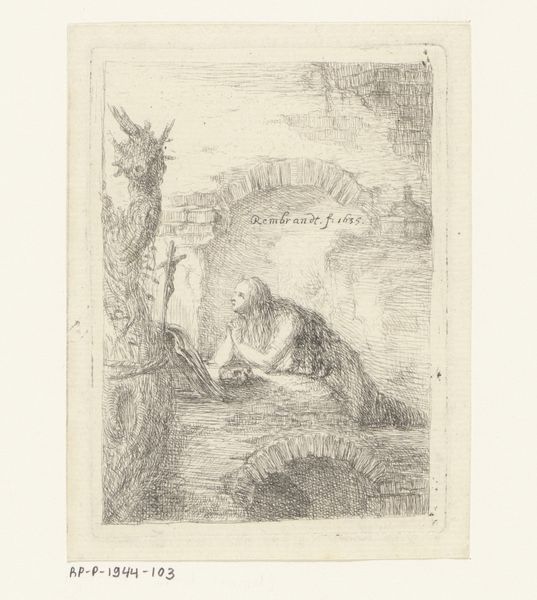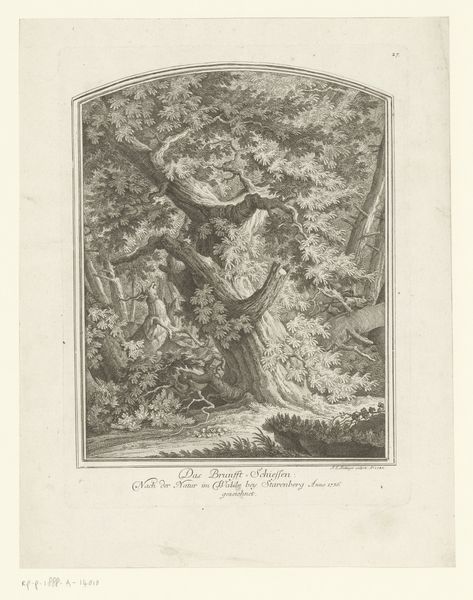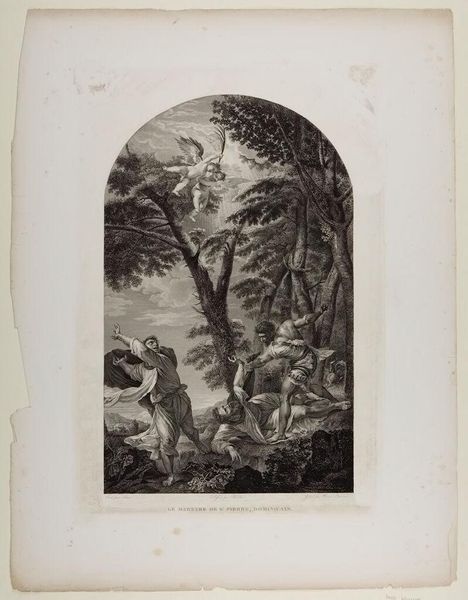
print, engraving
#
baroque
#
animal
# print
#
landscape
#
forest
#
genre-painting
#
engraving
#
realism
Dimensions: height 368 mm, width 284 mm
Copyright: Rijks Museum: Open Domain
Curator: This is "Patrijshond vangt een bijzonder grote gans," or "Partridge Dog Catches an Especially Large Goose," a 1745 engraving by Johann Elias Ridinger, housed here at the Rijksmuseum. Editor: Oh, it’s remarkably stark! The scene—the capture itself—is really raw, even for an engraving. There is such a heavy density of shadow. Curator: Ridinger's precision here contributes to that. Engravings have this unique ability to capture details that evoke deeper cultural meanings, especially surrounding our relationship with nature and animal instinct. This image speaks volumes about the societal values placed on hunting. It symbolizes power, status, and perhaps a sort of dominance over the natural world, which was so important in the Baroque period. Editor: Right. Looking at the goose, the linear quality emphasizes its vulnerability and stiffness against the implied movement of the dog. It seems almost theatrical, with its precise, controlled lines juxtaposed against the implied wildness of the scene. The meticulous detailing contrasts wonderfully. Curator: Think about how the landscape adds layers. The density of the forest in the background represents the untamed wilderness—a dangerous yet fertile realm where life and death play out. And then, we have the hunting dog as the bridge—trained to impose human order upon nature's chaos, signifying domestication and purpose. Editor: It certainly captures the hunt’s inherent tension and purpose, yes. But technically, the lines, the hatching, and cross-hatching define depth and form… all rendered with remarkable precision. It does suggest a mastery of engraving, reflecting both an artistic skill and maybe even… a certain aristocratic detachment from the harshness it portrays? Curator: I’d say it gives us a window into the historical worldview that romanticized the hunter—almost idealized as a cultural hero who provides and conquers. Thank you for elucidating its complex formal structure and emotional effect! Editor: My pleasure! This look has certainly allowed us both to capture Ridinger's vision in a more focused light, from the linear precision of the scene to the deep history captured in ink.
Comments
No comments
Be the first to comment and join the conversation on the ultimate creative platform.
